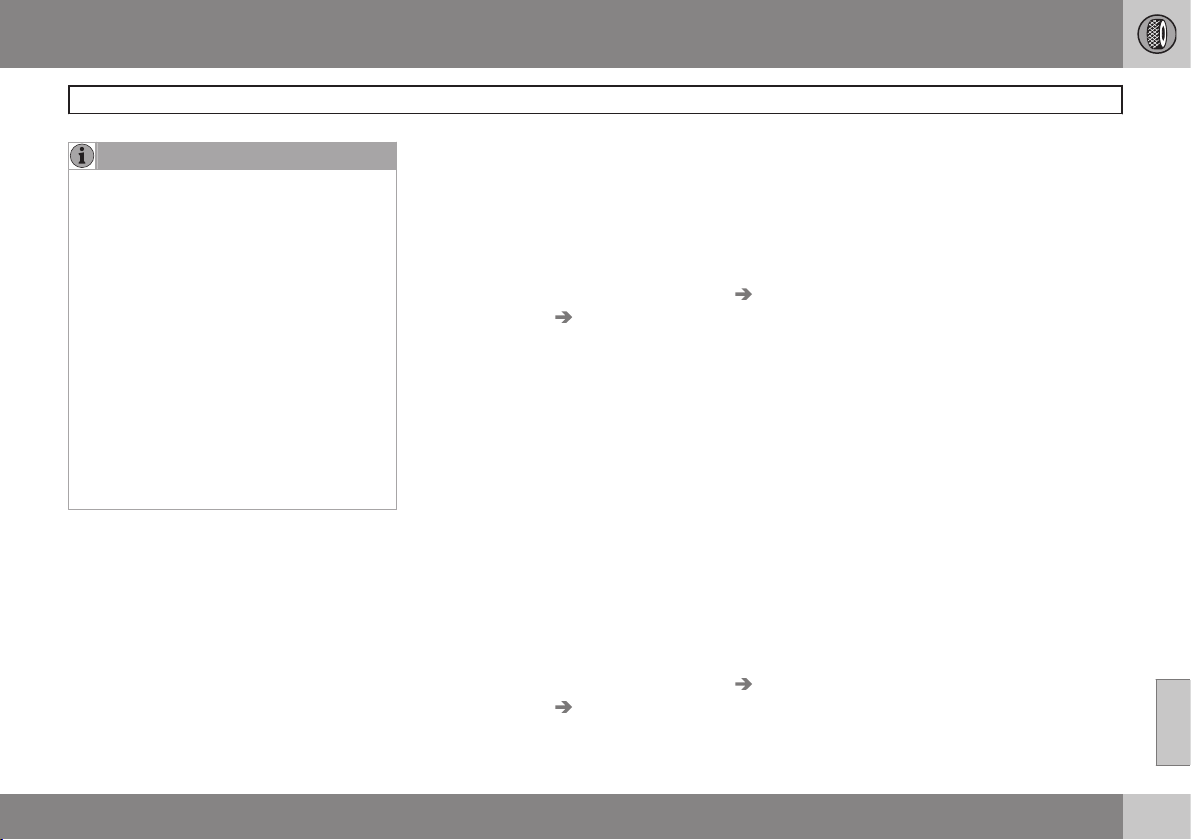Loading ...
Loading ...
Loading ...

08 Wheels and tires
Tire Pressure Monitoring System (TPMS)
08
* Option/accessory, for more information, see Introduction.
327
NOTE
•
If you change to tires with a different
recommended inflation pressure, the
TPMS system must be recalibrated to
these tires. On U.S. models, this must
be done by a trained and qualified
Volvo service technician. On Canadian
models, see the following section
"Recalibrating TPMS."
•
If a tire is changed, or if the TPMS sen-
sor is moved to another wheel, the
sensor's seal, nut, and valve core
should be replaced.
•
When installing TPMS sensors, the
vehicle must be parked for at least
15 minutes with the ignition off. If the
vehicle is driven within 15 minutes, a
TPMS error message will be displayed.
Recalibrating TPMS (Canadian models
only)*
In certain cases, it may be necessary to reca-
librate TPMS to conform to Volvo's recom-
mended tire inflation pressures (see the infla-
tion pressure table on page 307), for exam-
ple, if higher inflation pressure is necessary
when transporting heavy loads, etc.
This is done in the vehicle's menu system.
See page 199 for a description of the menu
system.
To recalibrate:
1. Switch off the engine.
2. Inflate the tires to the desired pressure
and put the ignition in mode I or II (see
page 87 for additional information).
3. Press the MY CAR key in the center con-
sole control panel and select
Settings
Car settings Tyre pressure
4.
Press OK/MENU, select
Calibrate tyre
pressure and press OK/MENU again.
5. Drive the vehicle at a speed above
25 mph (40 km/h) continuously for at
least 10 minutes.
> When the calibration message is no
longer displayed, TPMS has been
recalibrated to the new inflation pres-
sure.
Activating/deactivating TPMS
(Canadian models only)*
1. Switch off the engine.
2. Put the ignition in mode I or II (see page
87 for additional information).
3. Press the MY CAR key in the center con-
sole control panel and select
Settings
Car settings Tyre pressure
4.
Select
Tyre pressure system and press
OK/MENU to turn the system on or off.
Self-supporting run flat tires (SST)*
Self-supporting run flat tires are available as
optional equipment. The vehicle must be
equipped with the Tire Pressure Monitoring
System (TPMS) if tires of this type are instal-
led.
Tires of this type have specially reinforced
sidewalls that make it possible to continue
driving to a limited extent even though the tire
has lost some or all of its inflation pressure.
These tires are mounted on special rims (nor-
mal tires can also be mounted on these rims).
If an SST tire loses inflation pressure, the yel-
low TPMS symbol illuminates in the instru-
ment panel and a text message is also dis-
played. If this happens, reduce speed to not
more than 50 mph (80 km/h). The tire should
be replaced as soon as possible.
Drive carefully; it may be difficult to determine
which tire is damaged. To find the damaged
tire, check the inflation pressure in all four
tires.
Loading ...
Loading ...
Loading ...